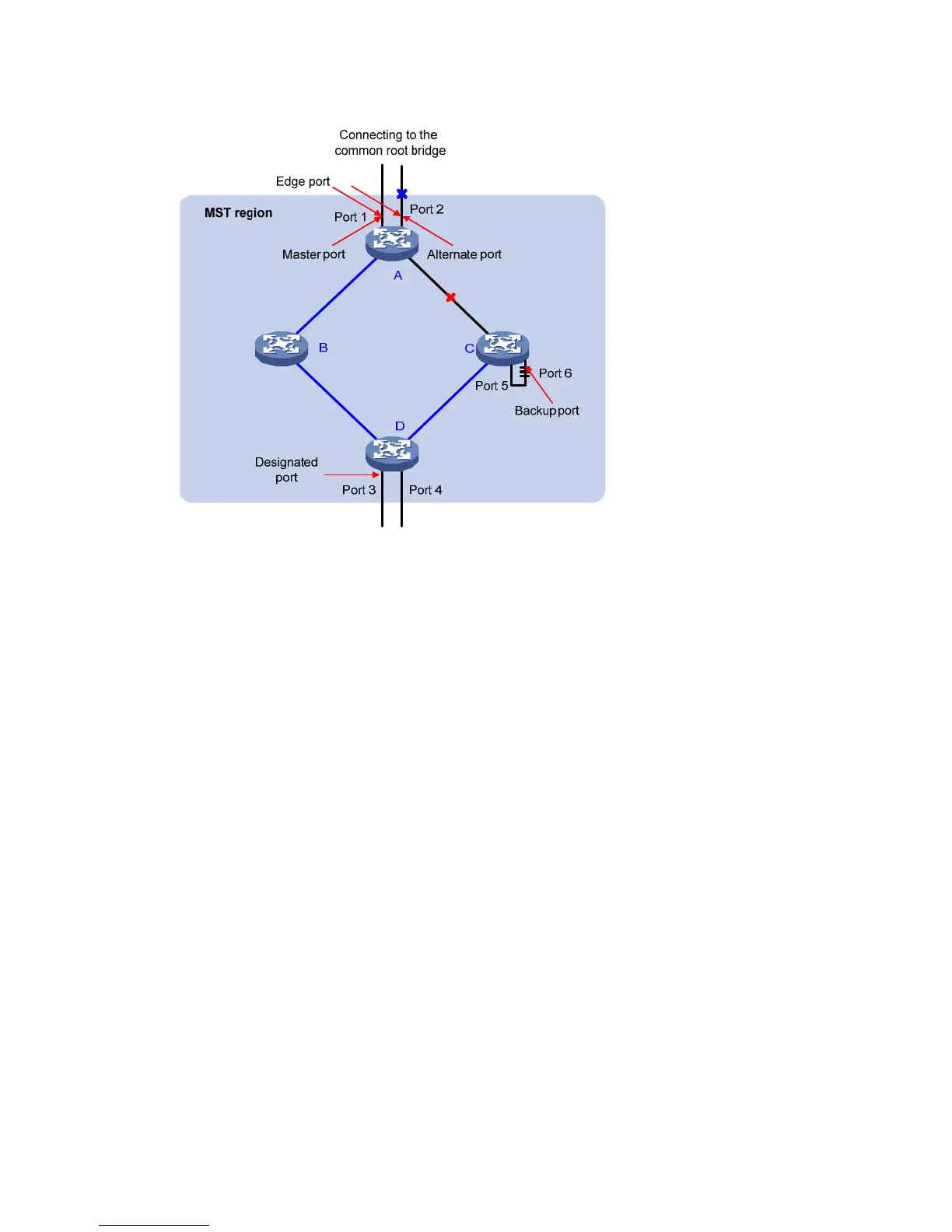188
Figure 177 Port roles
MSTP calculation involves the following port roles:
• Root port—Forwards data for a non-root bridge to the root bridge. The root bridge does not have
any root port.
• Designated port—Forwards data to the downstream network segment or device.
• Master port—Serves as a port on the shortest path from the local MST region to the common root
bridge. The master port is not always located on the regional root. It is a root port on the IST or CIST
and still a master port on the other MSTIs.
• Alternate port—Serves as the backup port for a root port or master port. When the root port or
master port is blocked, the alternate port takes over.
• Backup port—Serves as the backup port of a designated port. When the designated port is invalid,
the backup port becomes the new designated port. A loop occurs when two ports of the same
spanning tree device are connected, so the device blocks one of the ports. The blocked port acts as
the backup.
• Boundary port—Connects an MST region to another MST region or to an STP/RSTP-running device.
In MSTP calculation, a boundary port's role on an MSTI is consistent with its role on the CIST. But
that is not true with master ports. A master port on MSTIs is a root port on the CIST.
Port states
In MSTP, a port can be in one of the following states:
• Forwarding—The port learns MAC addresses and forwards user traffic.
• Learning—The port learns MAC addresses but does not forward user traffic.
• Discarding—The port does not learn MAC addresses or forwards user traffic.
A port can have different port states in different MSTIs. A port state is not exclusively associated with a
port role. Table 57 lists
the port states supported by each port role. (A check mark [√] indicates that the

